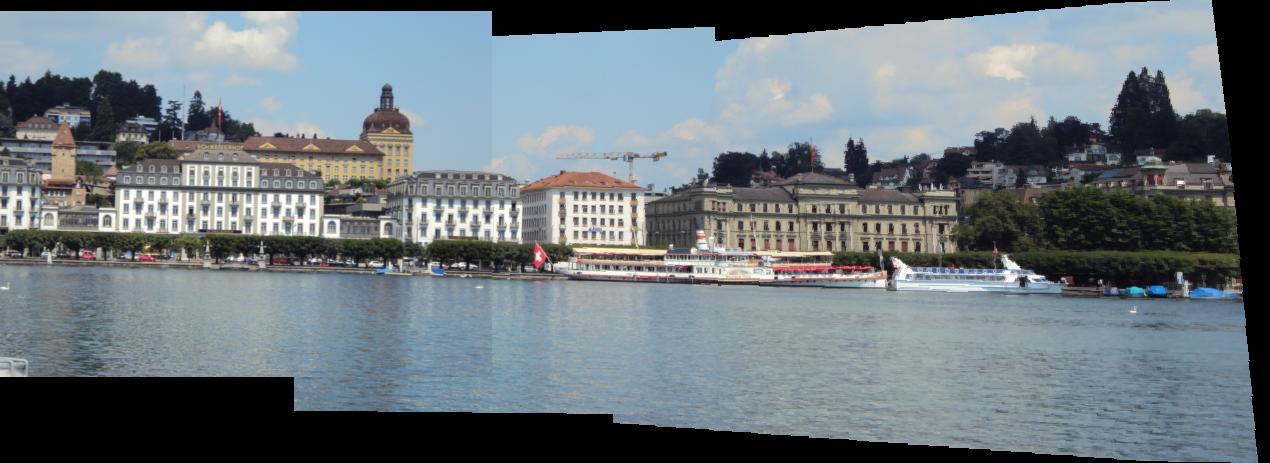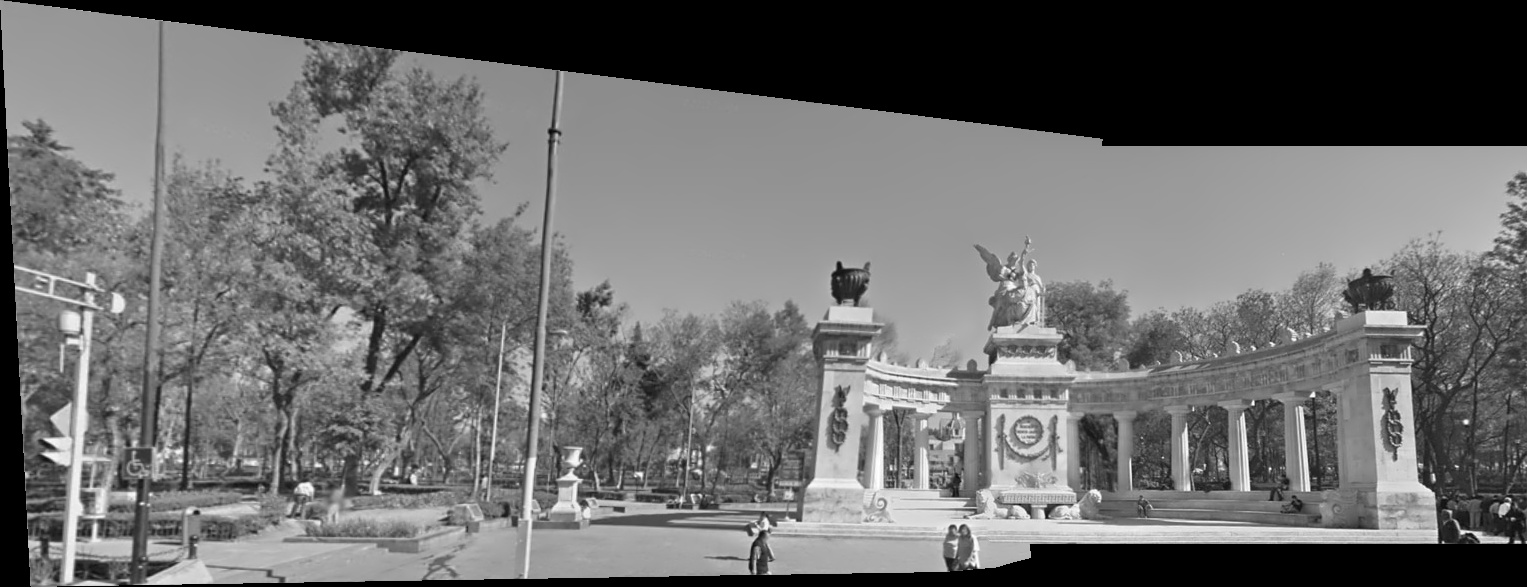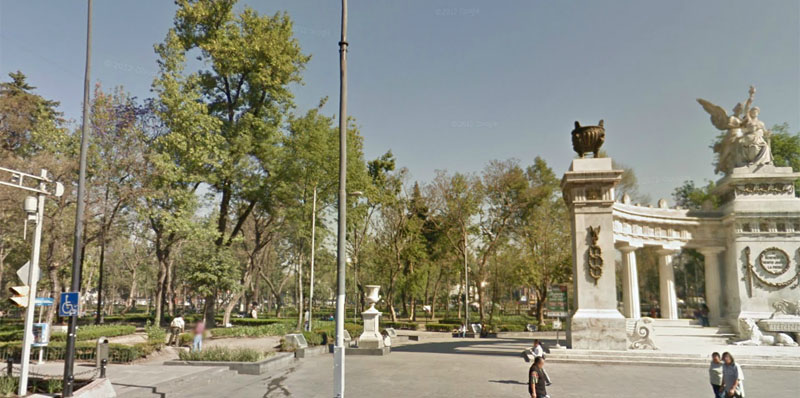For extra credit
- Extend your homography estimation to work on multiple images.
You can use this data, consisting of three sequences consisting of three images each. For the "pier" sequence, sample output can look as follows (although yours may be different if you choose a different order of transformations):

Alternatively, feel free to acquire your own images and stitch them.
- Experiment with registering very "difficult" image pairs or sequences -- for instance, try to
find a modern and a historical view of the same location to mimic the kinds of
composites found here.
Or try to find two views of the same location taken at different times of day, different
times of year, etc. Another idea is to try to register images with a lot of repetition,
or images separated by an extreme transformation (large rotation, scaling, etc.).
To make stitching work for such challenging situations, you may need to experiment with
alternative feature detectors and/or descriptors, as well as feature space outlier
rejection techniques such as Lowe's ratio test.
- Try to implement a more complete version of a system for "Recognizing panoramas" --
i.e., a system that can take as input a "pile" of input images (including possible outliers), figure out
the subsets that should be stitched together, and then stitch them together. As data for this, either use
images you take yourself or combine all the provided input images into one folder (plus, feel free to add
outlier images that do not match any of the provided ones).
- Implement bundle adjustment or global nonlinear optimization to simultaneously refine transformation parameters between all pairs of images.
- Learn about and experiment with image blending techniques and panorama mapping techniques (cylindrical or spherical).
Submission Instructions
You must upload the following files on Canvas:
- Your code for part 1. The filename should be lastname_firstname_a3_p1.py. We prefer that you upload .py python files, but if you use a Python notebook, make sure you upload both the original .ipynb file and an exported PDF of the notebook.
- A report in a single PDF file with all your results and discussion for following this template. The filename should be lastname_firstname_a3.pdf.
- All your output images and visualizations in a single zip file. The filename should be lastname_firstname_a3.zip. Note that this zip file is for backup documentation only, in case we cannot see the images in your PDF report clearly enough. You will not receive
credit for any output images that are part of the zip file but are not shown (in some form) in the report PDF.
Please refer to course policies on academic honesty, collaboration, late days, etc.



